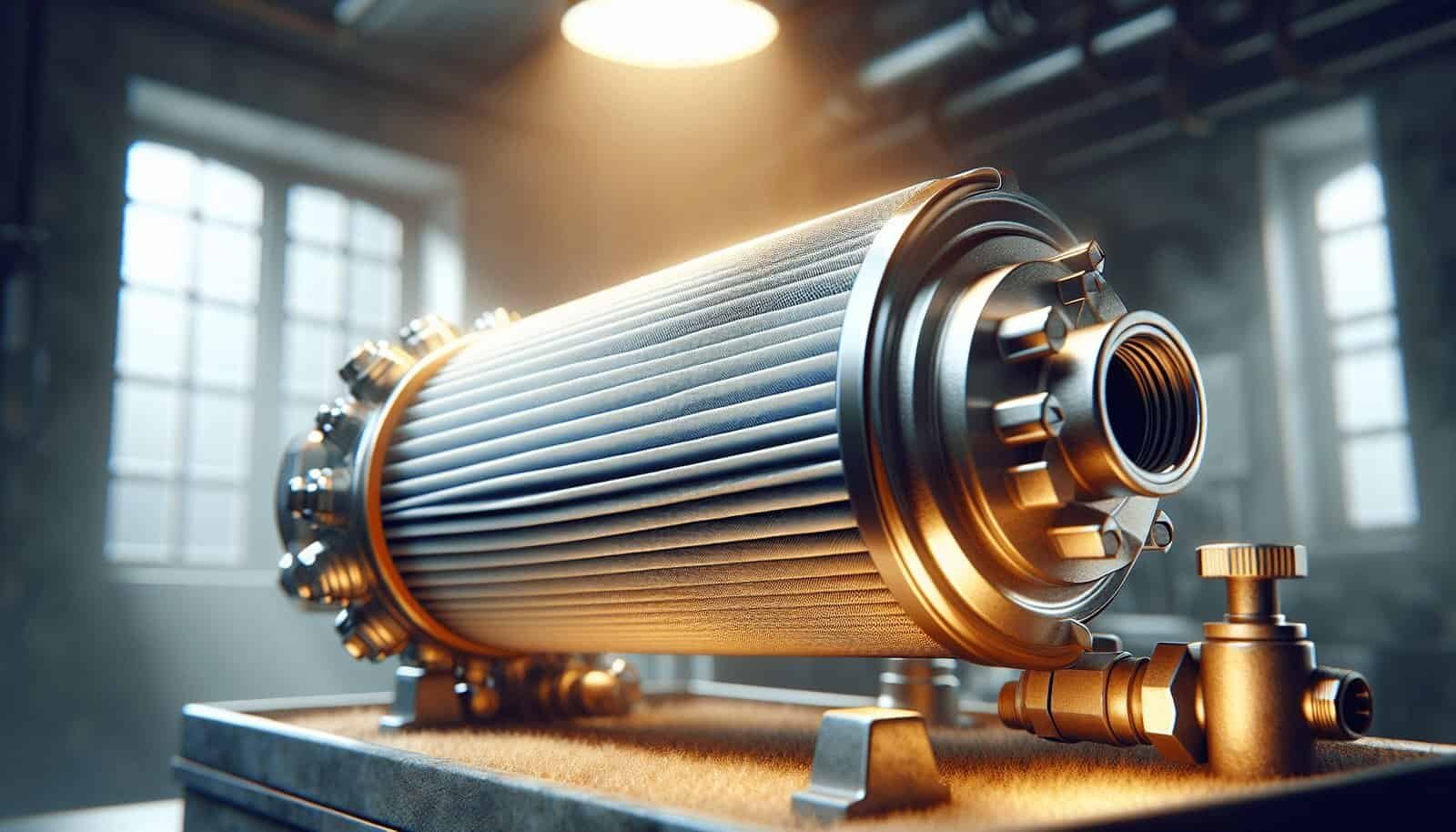How familiar are you with maintaining a well water filtration system? If you’re responsible for the upkeep of such a system, you know how vital it is to ensure clean, safe drinking water for your household or property. Neglecting regular maintenance can lead to issues that affect water quality and even the longevity of your system. But don’t worry—understanding how to properly maintain your system can be easier than you think.
In this comprehensive guide, you’ll discover the essentials of maintaining a well water filtration system. You’ll not only learn the steps required to keep it in tip-top shape but also the reasons why each step is crucial. This friendly guide offers practical advice and detailed instructions, helping you stay on top of your well water filtration system maintenance so you can enjoy peace of mind and, of course, clean water.
Understanding Your Well Water Filtration System
What is a Well Water Filtration System?
A well water filtration system is designed to remove various impurities and contaminants from your well water, ensuring it is safe for consumption and everyday use. These systems typically incorporate several types of filters, each targeting specific types of contaminants like sediment, bacteria, heavy metals, or chemicals. By understanding the system’s components, you can better appreciate why regular maintenance is necessary.
Components of a Well Water Filtration System
A typical well water filtration system may include multiple components like sediment filters, carbon filters, water softeners, UV filters, and reverse osmosis systems.
| Component | Purpose |
|---|---|
| Sediment Filter | Removes dirt, rust, and particles to protect subsequent filters and plumbing. |
| Carbon Filter | Absorbs organic chemicals and chlorine, improving taste and odor. |
| Water Softener | Reduces hardness caused by calcium and magnesium minerals. |
| UV Filter | Kills bacteria and viruses by exposing them to ultraviolet light. |
| Reverse Osmosis | Removes a broad spectrum of contaminants, including dissolved salts and heavy metals. |
Each part plays an integral role in purifying your water and requires specific upkeep to function effectively.
Importance of Regular Maintenance
Proper maintenance of your well water filtration system is crucial for several reasons. Regular care not only ensures the effectiveness in filtering contaminants but also extends the lifespan of the system. Without frequent maintenance, filters can become clogged, and other components may fail, leading to expensive repairs or replacements.
Ensuring Water Quality
One of the primary aims of routine maintenance is to ensure the consistent quality of your water. When filters become saturated with impurities, they lose their efficiency, possibly allowing harmful chemicals or bacteria to enter your drinking water.
Prolonging System Lifespan
Much like any home appliance, your well water filtration system has a finite lifespan. Routine maintenance can help push back the date you’ll need to replace the system through tackling wear and tear early. It keeps all components functioning at their peak and prevents accumulations of substances that could cause damage.
Preventing Costly Repairs
Taking small and regular steps in the maintenance routine can save you from expensive repairs down the road. Many filtration systems have early signs that indicate a brewing problem. By staying on top of maintenance, you can catch and resolve these issues before they escalate into major concerns.

Performing Routine Checks and Replacements
To keep your system in good working order, conduct routine checks and make necessary replacements or repairs on a timely basis. Let’s break down some essential tasks that should be part of your regular maintenance schedule.
Checking and Replacing Filters
Different filters have different lifespans. Sediment filters may need replacement every six months, whereas carbon filters could last a year. It’s essential to refer to your manufacturer’s guidelines.
| Filter Type | Typical Replacement Frequency |
|---|---|
| Sediment Filter | Every 6-12 months |
| Carbon Filter | Every 6-12 months |
| UV Light Bulb | Annually |
| Reverse Osmosis | Every 2 years |
Inspect filters every few months for sediment build-up or any signs of wear and tear. A decrease in water flow or quality might indicate that it’s time for a change.
Monitoring Water Pressure
Reduced water pressure can be an indicator of clogged filters or other issues within the system. Many filtration systems include a pressure gauge, permitting easy checks for any pressure abnormalities. If you notice a consistent drop in pressure, it might be time to inspect your filters or consult a professional.
Sanitizing the System
Bacteria and algae can build up in your filtration system, affecting water quality. Sanitizing the entire system— particularly if you observe biofilm or unusual odors—is crucial for maintaining safe and clean water. This can involve using specific sanitation products designed for water systems or a diluted bleach solution, but always consult your system’s manual for specific instructions.
Inspecting the Pipes and Fittings
Don’t forget to examine the pipes and fittings connected to your system for any signs of leaks, rust, or damage. Maintaining these components ensures that the entire filtration process works seamlessly and effectively.
Addressing Potential Problems
Even with an established routine, problems may still arise. Recognizing potential issues early can lead to quick resolutions and minimal disruption to your water service.
Identifying Unusual Tastes or Odors
If the taste or smell of your water changes, it might be related to a problem within your filtration system. Often, the issue stems from a failing filter or component. Inspect each part of your system and replace any elements as needed.
Managing Hard Water Deposits
Hard water can cause deposits in your pipes, reducing efficiency and damaging equipment. If you notice spots on dishes or reduced soap lather, your water softener might need attention. Consider adding a resin cleaner or adjusting the salt dosage in the softener to correct the issue.
Resolving Cloudy Water
Cloudy water can signify air trapped in the system or fine particulate matter that passed through the filters. If the system monitors and pressure gauges are within normal ranges, allow the water to run for a while to see if the cloudiness disappears. If not, further investigation is needed, possibly requiring a deeper inspection or professional assistance.

When to Call a Professional
While many maintenance tasks can be done on your own, some situations warrant calling a professional. This might include major leaks, electrical issues, or when you’re simply unsure about diagnosing a problem.
Complex Technical Issues
Some problems, particularly those involving wiring or internal system malfunctions, should be handled by someone with the right skills and knowledge. Attempting repairs beyond your expertise could further exacerbate the issue or pose safety risks.
Professional Inspection Recommendations
It’s also helpful to schedule annual inspections with a professional. They can offer insights you might miss during personal checks and provide advanced maintenance tips to prolong your system’s life. It also adds an extra layer of assurance that your system is in great shape.
Tips for Ongoing Maintenance
Beyond routine tasks, there are additional strategies you can employ to optimize the operation of your water filtration system.
Keep Records of Maintenance
Maintain a log of all maintenance activities, including filter replacements, pressure checks, and any issues found during inspections. This helps you keep track of when parts were last replaced and identifies any recurring problems that may need addressing.
Stay Informed About Your Water
The quality of well water can change with environmental shifts or neighboring activities. Stay updated on the general quality and potential contaminants in your water source. This can inform adjustments needed in your filtration system or its maintenance schedule.
Invest in Quality Components
When replacing parts or upgrading, choose high-quality components compatible with your system. Inferior parts might be less costly upfront but can cause issues or need more frequent replacing, leading to greater expense and inconvenience in the long run.

Conclusion
Regularly maintaining your well water filtration system ensures that you have dependable access to clean, safe water. Through routine checks, timely replacements, and monitoring, you can extend the life and efficiency of your system. When in doubt, professional guidance can further aid in maintaining your well water filtration system’s health. By following these guidelines, you’ll handle your system confidently, keeping your water safe and your household running smoothly.

